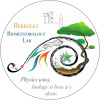Reports
Contents
| Title: | Picam FWB Rescaling - MB | |||||||||||||||||||||||||||||||||||||||||||||||||||||||||||||||||
| Date: | 2022-02-18 - 2022-11-03 | |||||||||||||||||||||||||||||||||||||||||||||||||||||||||||||||||
| Data File: | MB_PicamResc_AWB.csv MB_PicamResc_R14B13.csv MB_PicamResc_R18B18.csv |
|||||||||||||||||||||||||||||||||||||||||||||||||||||||||||||||||
| Refers to: | MB, RPI0W-003 | |||||||||||||||||||||||||||||||||||||||||||||||||||||||||||||||||
|
Acronyms R = red B = blue G = green GCC = green chromatic coordinate, [green/(red+blue+green)] AWB = automatic white balance where red, blue, and green gains are set by the camera FWB = fixed white balance where at least one of the red, blue, or green gains is set to a fixed value by the user
Mayberry 2021-04-27 (DOY 116): Installed picam onto MB tower for initial camera comparison with Canon and Stardot camera 2021-09-15 (DOY 258): Added FWB photos using R=1.4, B=1.3 (scaling factors Joe found online) 2022-06-08 (DOY 159): Changed FWB to use R=1.8,B=1.8 (scaling factors determined by Joe's analysis comparing R1.4B1.3 photos with AWB photos).
The FWB photos are nicer because there is less noise in the GCC values day to day. However, with our current RGB gains for FWB photos, there is a step change in the timeseries graph of GCC values when the data changes from AWB to FWB. To make a nice-looking graph, we decided to scale the FWB photos so the GCC from FWB photos is about the same magnitude as the GCC from the AWB photos.
To calculate rescaling factors, I used linear regression comparing R, G, and B between AWB and FWB photos for all daytime data. Restricting the regression to midday data did not provide enough range for a good regression. I forced the regression through 0 and used the slope of the regression line as my rescaling factor. Joe did some initial analysis with the FWB photos when R=1.4, B=1.3 and determined that if we scaled R and B so that R=1.8, B=1.8, the resulting GCC would be the same magnitude as the AWB GCC. I also calculated rescaling factors for R, G, B using linear regression comparing R, G, B between AWB and FWB photos for all daytime data. Restricting the regression to midday data did not provide enough range for a good regression. I forced the regression through 0 and used the slope of the regression line as my rescaling factor.
DOY 2021-258 to 2022-159 when R=1.4, B=1.3
DOY 159-307 (present) when R=1.8, B=1.8
Timeseries plot
The timeseries plots show the result of rescaling the FWB photos to get the final GCC to approximately match the GCC from the AWB photos.
After all of this rescaling analysis, Joe and I decided it wouldn't be worth the trouble of processing the FWB photos for our own database. FWB photos don't provide a significant improvement over AWB photos, especially if we use moving averages and take the 90th percentile of our GCC data anyways.
Mayberry data in database: 2015-08-19 through 2021-10-23 (DOY 296): Canon PowerShot A480 2021-12-01 (DOY 335) to present: Picam AWB photos Mayberry photos available: 2021-12-01 (DOY 335) to 2022-06-09 10:15 (DOY 159): FWB photos rescaled using R(1.36), G(0.99), B(1.13) 2022-06-09 10:45 (DOY 160) to present: FWB photos rescaled using R(1.08), G(1.13), B(0.63)
|
||||||||||||||||||||||||||||||||||||||||||||||||||||||||||||||||||
| |


















